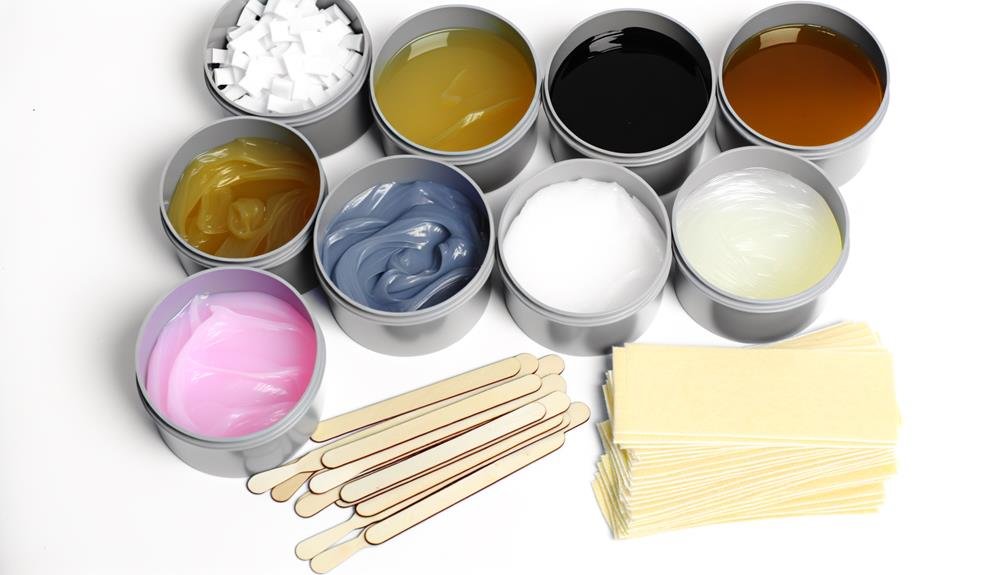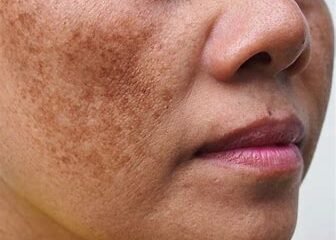Waxing
Waxing Do's and Don'ts
Looking to have a smooth and comfortable waxing experience? Knowing the Waxing Do’s and Don’ts is key.
Sharing any allergies or medications with your wax specialist, choosing a clean salon, and growing your hair to the correct length are all important do’s.
On the flip side, avoid tanning before or after waxing, exfoliating 24-48 hours prior, and applying lotions or creams on the day of your wax.
Following these guidelines ensures a successful waxing session.
Key Takeaways
- Let hair grow to recommended length for effective waxing
- Take a hot bath or shower before waxing to open up pores
- Avoid shaving between wax appointments to prevent ingrown hairs
- Gently exfoliate the waxed area regularly to prevent ingrown hairs
Preparing Your Skin
Before waxing, ensure that your skin is properly prepared by following these essential steps.
- Start by letting your hair grow to the recommended length for effective waxing. This allows the wax to grip the hair properly, ensuring a smoother removal process.
- Exfoliating your skin a day before waxing is crucial as it removes dead skin cells, preventing ingrown hairs and allowing the wax to adhere more effectively.
- Avoid applying lotions or oils to your skin before waxing, as this can create a barrier between the hair and the wax, leading to less effective hair removal.
- Additionally, taking a hot bath or shower before your waxing appointment helps to open up your pores, making the process less painful and more efficient.
- It’s also vital to inform your esthetician about any skin sensitivities or allergies you may have, as this can prevent potential skin damage.
During the Waxing Process
Once the waxing process begins, your esthetician will carefully apply the wax to small sections of your skin, ensuring thorough coverage and precise hair removal. It’s important to communicate any sensitivity or allergies to your esthetician to prevent skin damage. During the process, your esthetician will guide you on ways to minimize discomfort and potential skin reactions. Here are some tips to help you through the waxing process:
| Dos | Don’ts | Tips |
|---|---|---|
| Take a Hot Bath or Shower | Avoid shaving in between appt. to avoid ingrown hairs | Exfoliate between wax appointments |
| Less painful | Sensitive Skin | Gently exfoliate waxed area |
| Wear Loose-fitting clothing | Wear tight fitting clothing | Nylon fabric can cause ingrowns |
To minimize discomfort, take a hot shower before your appointment. This will help open your pores and make the hair removal less painful. It’s important to avoid shaving between wax appointments as this can disrupt the hair growth cycle and cause ingrown hairs. Additionally, gently exfoliate the waxed area 48 hours after the procedure to prevent ingrown hairs. Lastly, wearing loose-fitting clothing after waxing can help prevent irritation.
Aftercare Tips
After waxing, it’s important to keep the waxed area clean and moisturized to maintain soft skin and avoid irritation. Here are some aftercare tips to ensure your skin stays healthy and smooth:
- Exfoliate regularly: Gently exfoliating the waxed area helps prevent ingrown hairs by removing dead skin cells that can block hair follicles. This promotes healthy hair growth and keeps your skin looking and feeling its best.
- Avoid hot days: On hot days, your skin may be more prone to redness and irritation after waxing. Try to stay in cool, shaded areas and avoid activities that may cause excessive sweating, as sweat can further irritate the skin.
- Moisturize appropriately: Use a fragrance-free and gentle moisturizer to keep your skin hydrated without causing irritation. Moisturizing after waxing helps soothe the skin and maintain its softness, so be sure to apply it regularly, especially after showering or bathing.
Choosing the Right Wax
When choosing the right wax for your waxing session, prioritize considering your skin sensitivity and hair thickness to ensure the best results. Different types of waxing cater to various skin and hair types. It’s essential to make an informed decision to minimize discomfort and achieve optimal results. Here’s a helpful table to guide you in choosing the right wax for your needs:
| Type of Wax | Best for Skin Sensitivity | Suitable for Hair Thickness |
|---|---|---|
| Hot Wax | Ideal for sensitive skin, as it opens pores and hair follicles, making it less painful | Suitable for finer hair, especially in sensitive areas like the bikini line and face |
| Strip Wax | Not recommended if your skin is more sensitive, as it can cause redness and ingrown hairs | Quick and suitable for thicker or less sensitive skin, such as legs and arms |
Considering these factors will help you make an informed decision when choosing the right wax for your waxing session. Remember, for best results, hair should be about a quarter of an inch long, or roughly four weeks’ worth of growth, before waxing.
Understanding Hair Length
To ensure successful waxing, it’s crucial to understand the impact of hair length on the effectiveness of the process. When it comes to waxing, the length of your hair plays a significant role in achieving the best results.
Here are a few key points to consider regarding hair length for waxing:
- Ideal Length: The hair should be at least 1/4 inch long for the wax to grip effectively. Hair that’s too short can result in an incomplete removal, leading to a less smooth finish.
- Causes of Concern: Shaving between waxing appointments can cause the hair to be too short for effective waxing. Additionally, on a hot day, the hair may grow slightly less, so it’s important to plan accordingly and ensure the hair reaches the recommended length.
- Preparation: Avoid wearing tight clothing that may cause friction on the waxed area in the hours prior to your appointment. Friction can cause the hair to be pressed flat against the skin, making it difficult for the wax to grip the hair effectively.
Understanding the impact of hair length on waxing will help you achieve the best results and a smoother, longer-lasting outcome.
Avoiding Common Mistakes
To achieve successful waxing results, avoid common mistakes that can hinder the process and affect the outcome. Prior to waxing, make sure to exfoliate 24-48 hours before the appointment to prevent irritation. Take a day off from applying lotions, creams, or makeup on the day of your waxing session. Doing so will result in a less irritating experience.
Additionally, avoid tanning before or after waxing to reduce the risk of skin sensitivity and sunburn. After a bikini or Brazilian wax, refrain from sweating, hot showers, saunas, steam rooms, or tanning beds to prevent irritation and ingrown hairs. Remember not to shave between wax appointments to maintain the hair growth cycle and prevent unwanted hair from becoming ingrown.
Long-Term Hair Removal Considerations
To maintain longer-lasting results and slower hair regrowth over time, it’s important to adhere to proper aftercare practices and consistently attend regularly scheduled waxing appointments.
Here’s what you should consider for long-term hair removal:
- Proper Aftercare: After waxing, take a warm bath to help remove any wax residue and soothe your skin. Using aftercare products recommended by your waxing professional can also help prolong the results and make your wax last longer.
- Consistent Waxing Appointments: Regularly scheduled waxing appointments are crucial for achieving long-term hair removal benefits. Over time, consistent waxing can lead to thinner hair growth and longer periods of hair-free skin.
- Avoid Shaving: Shaving can cause thicker and faster regrowth, which counters the benefits of waxing for long-term hair removal. Additionally, shaving can lead to ingrown hairs and bacterial infections, especially in sensitive areas. Let your skin fully recover and commit to a full wax for optimal long-term results.
Frequently Asked Questions
What You Shouldn’t Do After Waxing?
After waxing, you shouldn’t expose the waxed area to direct sunlight, apply lotions or heavy creams, take hot baths or engage in intense physical activity. Also, avoid using deodorant or scented products on freshly waxed skin.
What Should You Not Do Before Waxing?
Before waxing, don’t expose your skin to the sun, apply lotions, or engage in activities like hot baths. Avoid intense physical activity and using deodorant or alcohol-based products to prevent skin sensitivity and irritation.
What Are the Rules for Waxing?
Before waxing, ensure you communicate any allergies or medications with your specialist and choose a clean salon. Grow hair to the right length and understand the available waxes. Also, avoid tanning for skin sensitivity.
How Many Hours After Waxing Can I Shower?
You can shower at least 24 hours after waxing. It’s important to let the skin heal and hair follicles close properly. Avoid hot showers and harsh soaps to prevent irritation. Gently cleanse the area and pat dry.
Conclusion
So, remember to follow the do’s and don’ts of waxing for a smooth and successful experience.
- Share any allergies or medication use,
- Choose a clean wax salon,
- Grow your hair to the correct length.
Avoid tanning, exfoliating, and applying lotions on the day of your wax.
By following these guidelines, you can ensure a comfortable and effective waxing session.
Waxing
Waxing Pot and Wax for Every Skin Type Removal TIPs
Looking for waxing tips for every skin type? Check out our guide on the best waxing pot and wax to use for different skin types.

Are you aware that nearly 85% of women in the United States remove unwanted hair on a regular basis? If you’re one of them, then you know the importance of finding the right wax and waxing pot for your specific skin type. But with so many options available, how do you know which one is best for you? In this discussion, we will explore the different types of wax and waxing pots that cater to every skin type, helping you achieve the smooth and hair-free results you desire. So, whether you have dry, oily, or sensitive skin, keep reading to discover the tips and tricks that will revolutionize your waxing experience.
Key Takeaways
- Consider your skin type and the area you will be waxing when choosing between hard wax and soft wax.
- Hard wax is recommended for sensitive skin and smaller sections, while soft wax is ideal for larger areas.
- Opt for hard wax or stripless wax for sensitive skin to minimize irritation and discomfort.
- Practice pre and post-wax care essentials, such as cleansing the area before waxing, exfoliating to prevent ingrown hairs, and moisturizing the skin after hair removal.
Find the Perfect Wax for Your Skin Type
To find the perfect wax for your skin type, consider whether you would benefit more from using hard wax or soft wax. Both types of wax can effectively remove hair, but they have different properties that make them more suitable for certain areas of the body. If you have sensitive skin or want to wax more delicate areas like the bikini area or face, hard wax may be the better choice. Hard wax adheres to the hair only and not the skin, making it less painful and reducing the risk of irritation. On the other hand, if you are waxing larger areas like your legs or arms, soft wax may be more appropriate. Soft wax can cover more surface area at once, making the process quicker and more efficient. When choosing a wax, it is important to consider your skin type and consult with a board-certified dermatologist if you have any concerns. They can provide personalized recommendations based on your specific needs and help you achieve the best results.
How to Use Hard Wax for At-Home Hair Removal
Using hard wax for at-home hair removal is a simple and effective method for achieving smooth and hair-free skin. Here are some tips to help you properly use hard wax for hair removal:
- Start by cleansing the area you want to wax with a gentle cleanser to remove any dirt or oils. This will ensure that the wax adheres properly to the skin.
- Apply a thin layer of pre-wax oil to protect your skin and create a barrier between the wax and your skin. This will help prevent any irritation or discomfort during the hair removal process.
- Heat the hard wax in a wax melter or warmer until it reaches the recommended temperature. Stir the wax slightly to cool it down a bit before applying it to your skin. This will prevent burns or discomfort.
- Apply the wax in the direction of hair growth, making sure to create a lip at the end. This lip will make it easier to remove the wax later on.
- Wait for the wax to harden completely before removing it. Then, quickly and firmly pull the wax off in the opposite direction of hair growth. This will ensure effective hair removal.
Hard Wax Vs. Soft Wax: Choosing the Right Option

When deciding between hard wax and soft wax for hair removal, it is important to consider your specific hair type and the area you will be waxing. Both types of wax have their own benefits, so it’s essential to choose the right option for your needs.
Hard wax is recommended for sensitive skin because it adheres to the hair shaft and removes on its own, making it less painful and gentler on delicate areas. It is also effective for preventing ingrown hairs and leaves the skin smooth and hair-free. Hard wax is suitable for smaller sections, like the bikini area or face, and works well with a wax warmer.
On the other hand, soft wax is ideal for larger areas like legs or arms. While it may be more painful than hard wax, it is still effective in removing the hair from the root. Soft wax is also great for exfoliating the skin and moisturizing it, leaving you with smooth and silky results.
Tips for Waxing Sensitive Skin
If you have sensitive skin, it’s crucial to take extra precautions when waxing to minimize any potential irritation or discomfort. Here are some tips to help you have a successful waxing experience:
- Choose the right wax: Opt for hard wax or stripless wax, as they are gentler on sensitive skin compared to soft wax. These types of wax adhere to the hairs, not the skin, reducing the risk of irritation.
- Prep your skin: Make sure your skin is clean and dry before waxing. This helps the wax adhere better to the hairs and reduces the chances of any unwanted side effects like ingrown hairs. You can also apply a light layer of baby powder to absorb any excess moisture and make the waxing process smoother.
- Wax in the opposite direction of hair growth: When applying the wax, be sure to go against the direction of hair growth. This helps the wax grip the hairs more effectively, resulting in a cleaner and less painful waxing experience.
Pre and Post-Wax Care Essentials

Are you unsure about how to properly care for your skin before and after waxing? Taking care of your skin is crucial to ensure a smooth and successful waxing experience. Let’s start with pre-wax care. Before waxing, it is essential to cleanse the area with a pre-wax cleanser to remove any dirt or oils. This will allow the wax to adhere better to the hair and not the skin. Additionally, exfoliating the area beforehand can help remove dead skin cells and prevent ingrown hairs.
Moving on to post-wax care, it is important to soothe and moisturize your skin after hair removal. Applying a soothing lotion or aloe vera gel can calm any redness or irritation. This will also help keep your skin hydrated and prevent dryness. To avoid further irritation, it is recommended to avoid hot showers or baths for at least 24 hours after waxing.
For those with sensitive skin, using a hard wax specifically designed for sensitive skin can help minimize discomfort and reduce the risk of irritation. Taking these steps will ensure that your skin remains smooth and hair-free for longer. Remember to regularly exfoliate the waxed area to prevent ingrown hairs and maintain smooth skin. Lastly, wearing loose-fitting clothing after waxing will allow your skin to breathe and reduce friction.
Frequently Asked Questions
Is Waxing Suitable for All Skin Types?
Yes, waxing is suitable for all skin types. It’s important to choose the right wax for your skin type and follow proper pre and post-wax care. Patch testing is recommended to ensure compatibility.
What Hair Removal Wax Doesn T Stick to Skin?
Hard wax is the best option for hair removal that doesn’t stick to your skin. It adheres to the hair shaft and removes on its own, making it less likely to cause discomfort or irritation.
What Are 3 Waxing Methods?
There are three waxing methods: hard wax, soft wax, and sugaring. Hard wax is great for sensitive areas, while soft wax is ideal for larger areas. Sugaring involves using a paste made of sugar, lemon, and water for hair removal.
How Do You Get Wax off Your Skin That Won’t Come Off?
To get wax off your skin that won’t come off, try applying a little baby oil or olive oil and gently massaging the area. Then, use a warm, damp cloth to wipe away the softened wax.
Waxing
Tools for at Home Waxing
Wondering if at-home waxing is for you? You'll be glad to know that with the right tools, achieving smooth, hair-free skin is more convenient than you think. From wax strips to wax warmers, the right kit can provide a professional waxing experience in the comfort of your own home.
Whether it's for your legs, face, or bikini area, a variety of kits cater to different needs. With proper heating and aftercare, you can achieve safe and effective results while minimizing the risk of skin damage.
So, if you're ready to take control of your hair removal routine, let's explore the essential tools for successful at-home waxing.
Key Takeaways
- Spatula: Apply hard wax beads in a thin, even layer for effective hair removal.
- Wax warmer: Heat wax to the perfect temperature for a professional waxing experience at home.
- Wax strips: Convenient option for sensitive areas like the face, with different sizes for various body areas.
- Hard wax: Gentle and suitable for sensitive skin, removes hair from delicate areas.
Essential At-Home Waxing Tools
You should always use a spatula to apply the hard wax beads onto your skin in a thin, even layer for the best results. This ensures that the wax adheres to the hair follicles and removes on its own, making it suitable for sensitive skin and less painful.
When choosing an at-home hair removal kit, consider a wax warmer to heat the wax to the perfect temperature, providing a professional waxing experience in the comfort of your home. For areas like the face, where the skin is more delicate, wax strips are a convenient option. Look for a kit that includes multiple strip sizes for different body areas and is suitable for sensitive skin.
It's important to consider the type of wax included in the kit. Hard wax is gentle and effective for sensitive skin, while soft wax can be irritating. Ensure the kit contains skin-soothing ingredients to calm and nourish the skin post-waxing.
Types of Wax for Home Use
When selecting a wax for at-home use, consider the wax's ingredients and suitability for your skin type and sensitivity. There are various types of wax for home use, each with its own benefits and suitability for different areas of the body. Here are some popular options to consider:
- Soft or Hard Wax: Best Home Waxing Kits may offer both options, but soft wax is great for larger areas of the body, while hard wax is ideal for sensitive areas like the face and bikini line.
- Flamingo Women's Body Wax: This type of wax is made with organic sugar, making it a natural and eco-friendly option for removing hair from both the face and body.
- Hair Remover Wax Strip: These strips are convenient and easy to use, providing a mess-free waxing experience. Some may come with a removable silicone bowl for heating the wax, enhancing the at-home waxing process.
Choosing the right type of wax for your at-home waxing needs is essential for achieving the best results and ensuring a comfortable experience.
Choosing the Right Waxing Kit
Select a kit that caters to your specific waxing needs and preferences. Consider the areas of your body that need waxing and whether you have a preference for hard or soft wax. If you have sensitive skin, opt for a kit that includes hard wax, as it's more gentle.
Look for a home wax kit that includes both face and body applicators if you plan to wax different areas. Ensure that the kit is designed to remove unwanted hair from the specific areas you're targeting. Check the ingredients to make sure they don't contain any potential allergens, and prioritize hydration by choosing a kit with added oils.
For those with sensitive skin, it's crucial to select a body wax kit that's formulated to be gentle and soothing. Additionally, consider kits that come with aftercare products to soothe and moisturize the skin after waxing.
Post-Waxing Skin Care
After waxing, it's important to regularly apply aloe to soothe the skin and minimize irritation. This will help to calm any redness and sensitivity caused by the hair removal process. In addition to aloe, consider using nourishing oils to keep the skin hydrated and prevent dryness. Opt for oils that are good for sensitive skin to minimize the risk of any adverse reactions.
Use a purifying lotion to cleanse the skin after waxing. This will help to remove any leftover wax residue and soothe the skin.
Consider wearing loose clothing to prevent friction and irritation on the freshly waxed skin.
Maintain proper hygiene to avoid infections. Keep the waxed area clean and dry to reduce the risk of any post-waxing complications.
Tips for Successful At-Home Waxing
To achieve successful at-home waxing, ensure you have high-quality wax strips and a reliable wax heater. Choose a wax kit that's easy to use and suitable for your skin type. For sensitive skin, opt for a gentle formula designed to minimize irritation. Consider a hard wax for smaller, delicate areas like the face, as it provides good precision and is less harsh on the skin.
Before applying the wax, test the temperature on a small area of skin to avoid burns. It's crucial to follow the instructions regarding the wax's temperature to ensure safe and effective hair removal.
Additionally, to reduce discomfort during waxing and minimize ingrown hairs, exfoliate the skin a day or two before waxing. After waxing, soothe the skin with a post-wax oil or lotion specifically formulated to calm and moisturize the skin.
Frequently Asked Questions
What Do You Need to Wax at Home?
You need waxing strips, warming kits, and soothing lotions for at-home waxing. Choose soft or hard wax based on your hair type and sensitivity. Use large strips for legs and smaller ones for the face.
What Equipment Is Needed for Waxing?
To wax at home, you need wax strips or a waxing kit, a wax warmer, pre-wax cleanser, and post-wax soothing oil. Make sure to also have applicator sticks, a mirror, and baby powder for a smooth process.
What Is a Good at Home Waxing Kit?
For a good at-home waxing kit, consider Nads Natural Sugar Wax kit or Bliss at-home waxing kit. They are effective and easy to use, providing long-lasting results. Both are popular choices for achieving smooth, hair-free skin.
Is It OK to Wax Yourself at Home?
Yes, it's okay to wax yourself at home if you follow proper techniques and precautions. Choose a gentle wax kit suitable for your skin type, exfoliate beforehand, and follow up with post-wax care for best results.
Conclusion
Now that you have all the essential tools and knowledge for at-home waxing, you can achieve smooth and hair-free skin without the hassle of salon appointments.
Remember to follow proper heating and aftercare instructions for safe and effective results.
With the right waxing kit and post-waxing care, you can enjoy the convenience and cost-effectiveness of at-home waxing while achieving professional-quality results.
Waxing
Types of Waxes
Looking to learn about types of waxes? You’ve come to the right place!
There are various types of waxes used for hair removal, each with its own unique benefits.
From warm soft wax for fine hairs to fruit wax for sensitive skin, there’s a wax suited for everyone.
Understanding the differences can help you provide the best service for your clients.
Key Takeaways
- There are different types of hair removal waxes, including warm soft wax, warm hard wax, pre-made wax strips, and fruit wax, which cater to specific preferences and skin types.
- Bikini wax styles include classic bikini wax, mini Brazilian wax, full Brazilian wax, and
Hair Removal Waxes
If you’re looking for effective hair removal waxes, consider the various types available to find the one best suited for your needs. There are different types of waxes for hair removal, each catering to specific preferences and skin types.
Warm soft wax, also known as strip wax, is a popular choice. It’s gently warmed and applied in a thin layer over the skin, efficiently removing hair when a cloth strip is pressed on and removed.
On the other hand, warm hard wax is suitable for areas with thicker hair. It’s applied warm and hardens as it cools, making it perfect for smaller, more sensitive areas like the lip, nose, underarms, and bikini area.
If you prefer a less messy option, consider pre-made wax strips. These are ready-to-use strips with the right amount of wax attached, making them user-friendly and ideal for smaller areas.
If you have sensitive skin, fruit wax might be the best option for you. It contains fruit enzymes that gently buff away texture and is rich in antioxidants, anti-inflammatory, and brightening properties, making it safe for sensitive skin.
Whether you choose warm soft wax, warm hard wax, pre-made wax strips, or fruit wax, you’ll find an option that suits your hair removal needs.
Bikini Waxes
When choosing a bikini wax, you may want to consider the specific style that best suits your preferences and needs for hair removal. Different waxes offer various levels of hair removal and styling, catering to individual desires. Here are some options to consider:
- Classic Bikini Wax: This style targets visible areas from a bathing suit, removing hair up to a four-finger width from the bikini line, providing a clean and tidy appearance.
- Mini Brazilian Wax: Ideal for those who prefer a minimal look, this style involves completely removing the hair from the front, leaving the front area totally bare.
- Full Brazilian Wax: The most commonly requested option, covering everything in the front, including the bikini line and labia, and extending all the way to the butt strip, ensuring a completely hair-free result.
- French Wax: Sometimes referred to as a French bikini, this style leaves some hair on top and on the labia, going slightly inside where the swimsuit would cover, offering a more natural look while still providing hair removal.
Considering the various options available, it’s essential to choose the style that best suits your desired hair growth and removal preferences
Pre-made wax strips: These are convenient options for quick applications, especially for smaller areas and when traveling, ensuring that your equipment is always ready for action.
Understanding the different types of ski and snowboard waxes available will help you make informed decisions about the best products to use for your specific needs.
Frequently Asked Questions
What Are the 2 Main Types of Wax?
The 2 main types of wax are warm soft wax and warm hard wax. Warm soft wax is great for even the finest hairs, while warm hard wax is effective for thicker and finer hair.
Which Wax Is Best for Body Female?
For female body waxing, warm soft wax is best. It efficiently picks up fine hairs and should be applied once per area to avoid irritation. It’s a great choice for smooth, long-lasting results.
Is Brazilian Wax a Type of Wax?
Yes, Brazilian wax is a type of wax primarily used for hair removal in the bikini area. It includes variations like mini, full, Sphinx, Hollywood, and Brazilian South, catering to different preferences for hair removal.
What Waxes for Brazilian Wax?
For Brazilian waxing, consider warm soft wax or warm hard wax. These are efficient at picking up even the finest hairs. Avoid using cold soft wax multiple times on the same area, as it can cause irritation.
Conclusion
So, whether you’re looking for a gentle and efficient hair removal method, a smooth bikini wax, or a brazilian wax these tips will help you choose the right wax for you.
With options like warm soft wax, warm hard wax, cold soft wax, fruit wax, and sugar wax, you can find the perfect match for your skin type and preferences.
Happy waxing!
-

 Skin Care2 years ago
Skin Care2 years agoSkin Care Products That Diminish Hyperpigmentation
-

 Skin Care2 years ago
Skin Care2 years agoUltimate Guide to Identifying Your Skin Type
-

 Brow Care2 years ago
Brow Care2 years agoWhy Brow Gels Can Cause Brows to Fall Out
-

 Brows2 years ago
Brows2 years agoHow to have Thicker Eyebrows
-

 Homemade Beauty2 years ago
Homemade Beauty2 years agoRecipes for Homemade Facials
-

 Skin Care2 years ago
Skin Care2 years agoMorning and Night Skincare Routines for Various Skin Concerns.
-

 Lip Care2 years ago
Lip Care2 years agoVegan Lip Care: The Best Cruelty-Free Products
-

 Hair-Styling2 years ago
Hair-Styling2 years agoEasy Hairstyles for Busy Mornings.




